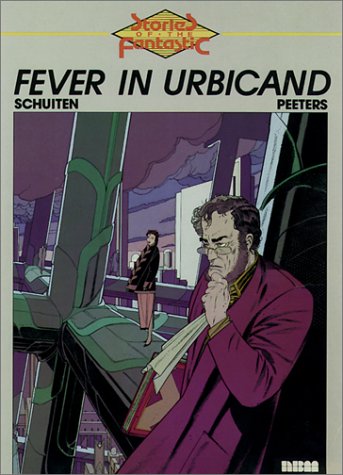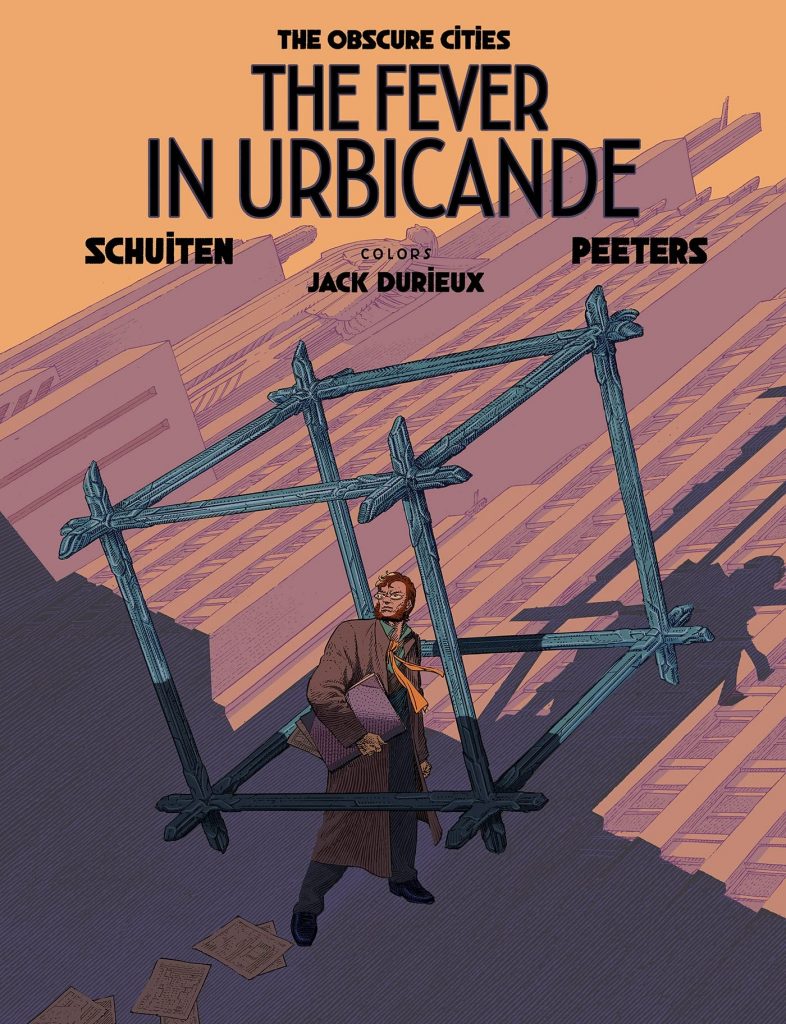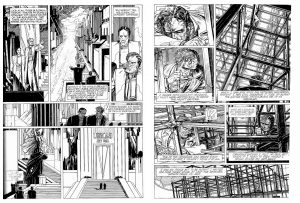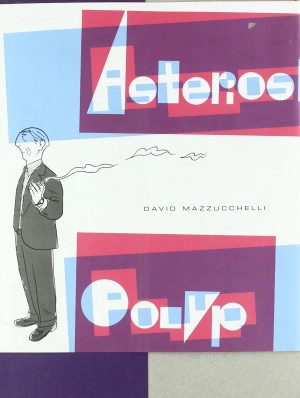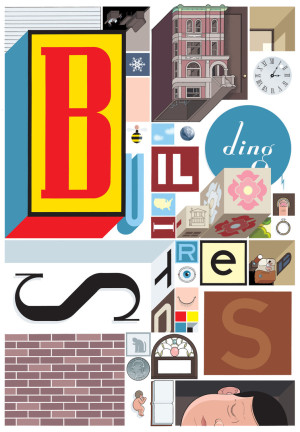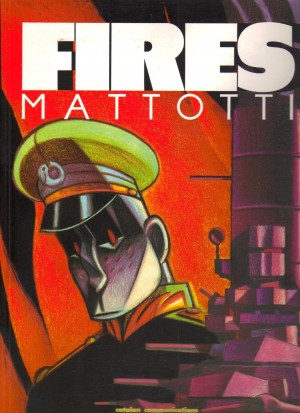Review by Fiona Jerome
Fever in Urbicand is the second volume in what was originally referred to as the ‘Cities of the Fantastic’ series, but latterly as ‘the Obscure Cities’, following Samaris. It’s one of the most thoughtful works of Belgian creative duo Benoît Peeters and François Schuiten. Artist Schuiten comes from a family of architects, and his artwork shows a continued fascination with cityscapes and urban living. Writer Peeters crafted a series of interlinked but independent stories for the series, which discuss ideas about how environment affects the way we live and how form and shape can influence our thinking – very like Mister X.
In Fever in Urbicand, a sort of architectural romance with echoes of Ayn Rand’s The Fountainhead, a maturing architect feels thwarted by his city’s government, which will not allow him to complete the final phase of a city-wide constructions project by building a bridge. Robick, an Urbatect, very much believes in the influence of environment and has, over the years, rebuilt Urbicand into a city the Nazis would have been proud of, full of monumental Art Deco buildings with neo-classicist overtones. Furniture and clothing have followed his trend and now people live in a world that seems to erupt upwards and strive for the sky – unless they have the misfortune to live on the wrong side of the river where the new Urbicand has literally overshadowed the inhabitants’ chaotic landscape and deprived them of light.
One day Robick is given a mystery open-sided cube dug up during construction, which begins to grow and, inexplicably, exists in a plane that allows it to expand through the city Robick is so proud of creating. Indestructible, the cube grows into a network of girders dissecting the city, and as it increases in size and finally spans the river its influence focuses the unrest of the people and causes the downfall of the government. But what will happen as it continues to grow to cosmic proportions?
Peeters interweaves the story of the ageing architect’s attraction to a high class madam that he meets due to his notoriety as the unwilling ‘architect’ of the new order, with his parable of social desires to great effect. And Schuiten’s artwork, with its delicate yet monumental lines and clearly-drawn characters, gives a real sense that it is the protagonists of the story who seek to understand and control the mysterious grid, but the city itself that responds to it.
Originally serialised in Cheval Noir, the NBM edition uses the same translation. Peeters’ prose is very clear and he develops his story through an unseen narrator. The translation is successful because it does not have to deal with a lot of slang and interpretive dialogue. Peeters provides a long introduction to set the scene for the reader and while the whole story is about throwing something unknown into ordered society, the storytelling itself is designed to ensure the reader gets the points the writer and artist are trying to make.
As part of their ongoing project to issue the entire Obscure Cities line in English, IDW supplied The Fever in Urbicande. As has been the case with other volumes, Schuiten and Peeters greatly revised the story, the most obvious change being it’s now supplied in colour.
